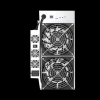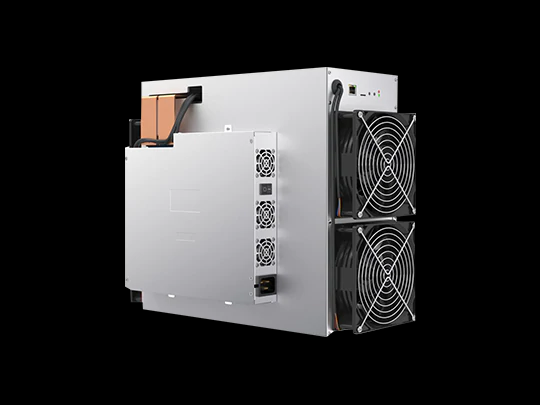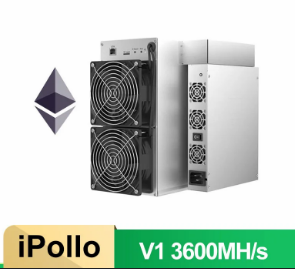<br>
<br>Scalability Advantages
<br>The standard Ethernet interface facilitates easy integration into existing network infrastructures, supporting scalable deployment across multiple units while maintaining operational simplicity and control.【What are the environmental impacts of using Ipollo V1 miner?】
The cryptocurrency mining industry has been under increasing scrutiny for its environmental impact, particularly concerning energy consumption and carbon emissions. As miners seek to balance profitability with sustainability, the choice of mining equipment plays a crucial role in determining the ecological footprint of their operations. The Ipollo V1 3600Mh/s ETH & ETC Miner emerges as a notable contender in this context, offering a blend of high performance and energy efficiency. However, understanding its environmental implications requires a closer examination of its design, operation, and broader industry context.

Energy Consumption and Efficiency
One of the most significant environmental concerns associated with cryptocurrency mining is energy consumption. The Ipollo V1 operates at a power draw of 3100W, which is substantial but relatively efficient for its class, given its impressive 3600 MH/s hashrate. This efficiency is achieved through advanced engineering and design optimizations that maximize computational output while minimizing energy waste.
For perspective, the energy efficiency of mining hardware is often measured in joules per terahash (J/TH). Lower values indicate better efficiency, meaning more computational work is done per unit of energy consumed. While exact J/TH figures for the Ipollo V1 may vary based on operating conditions, its design suggests a competitive position within the market. This efficiency not only reduces operational costs for miners but also lowers the overall energy demand, thereby mitigating its environmental impact.
However, it’s essential to consider the source of the electricity powering the Ipollo V1. Mining operations that rely on renewable energy sources, such as hydroelectric, solar, or wind power, can significantly reduce their carbon footprint. Conversely, those dependent on fossil fuels contribute to higher greenhouse gas emissions. Thus, while the Ipollo V1 itself is designed for efficiency, its environmental impact is also contingent on the energy mix of the grid it operates on.
Thermal Management and Cooling
Effective thermal management is another critical factor in assessing the environmental impact of mining hardware. The Ipollo V1 incorporates a sophisticated cooling system with four precision-engineered fans, maintaining optimal operating temperatures between 5-25°C. This system not only ensures consistent performance but also extends the lifespan of the hardware, reducing the need for frequent replacements and thereby decreasing electronic waste.
However, cooling systems themselves consume energy, and their efficiency directly affects the overall energy footprint of the miner. The Ipollo V1’s quad-fan setup is designed to balance cooling efficiency with noise levels, operating at a manageable 70dB. While this is relatively quiet for a mining device, it still represents an additional energy load. Miners must ensure that their facilities are well-ventilated and temperature-controlled to maximize the effectiveness of the cooling system without overburdening their energy infrastructure.

Manufacturing and End-of-Life Considerations
The environmental impact of mining hardware extends beyond its operational phase to include manufacturing and disposal. The Ipollo V1 is built with a modular design philosophy, enabling straightforward component replacement and maintenance. This approach not only enhances the longevity of the device but also reduces electronic waste by allowing miners to replace individual parts rather than the entire unit.
Moreover, Ipollo’s established reputation for quality control and manufacturing excellence suggests a commitment to sustainable production practices. While specific details about the sourcing of materials and manufacturing processes are not publicly available, the company’s emphasis on durability and reliability implies a focus on reducing waste and improving resource efficiency.
At the end of its lifecycle, responsible disposal and recycling of the Ipollo V1 are crucial to minimizing its environmental impact. Electronic waste, or e-waste, is a growing global concern, and the mining industry must adopt sustainable practices to address this issue. Miners should partner with certified e-waste recyclers to ensure that components are properly dismantled and recycled, recovering valuable materials and preventing harmful substances from entering landfills.

Broader Industry Context
To fully understand the environmental impact of the Ipollo V1, it’s important to consider it within the broader context of the cryptocurrency mining industry. Ethereum, one of the primary cryptocurrencies mined with the Ipollo V1, is transitioning from a proof-of-work (PoW) to a proof-of-stake (PoS) consensus mechanism through its Ethereum 2.0 upgrade. This shift is expected to drastically reduce the energy consumption associated with Ethereum mining, as PoS does not require intensive computational work.
While this transition may eventually render PoW mining obsolete for Ethereum, it also underscores the importance of adaptability in mining hardware. The Ipollo V1’s optimization for EtHash makes it highly effective for current mining needs, but miners must remain aware of industry developments and be prepared to pivot their operations as necessary.
Operational Best Practices for Sustainability
Miners using the Ipollo V1 can take several steps to further reduce their environmental impact:
- Source Renewable Energy: Where possible, miners should power their operations with renewable energy sources. This not only reduces carbon emissions but can also lower energy costs in regions where renewables are cheaper than fossil fuels.
- Optimize Cooling Systems: Efficient cooling reduces energy consumption and extends hardware lifespan. Miners should ensure their facilities are well-ventilated and consider innovative cooling solutions, such as immersion cooling, to enhance efficiency.
- Implement Energy Monitoring: Tracking energy usage helps miners identify inefficiencies and optimize their operations. Advanced monitoring systems can provide real-time data, enabling proactive adjustments to reduce energy waste.
- Adopt Responsible Disposal Practices: Partnering with certified e-waste recyclers ensures that end-of-life hardware is disposed of in an environmentally responsible manner, recovering valuable materials and minimizing harm.
- Stay Informed About Industry Trends: Keeping abreast of developments in the cryptocurrency and mining industries allows miners to adapt their strategies and equipment choices to align with emerging sustainability standards.
Conclusion
The Ipollo V1 3600Mh/s ETH & ETC Miner represents a significant advancement in EtHash mining technology, offering a powerful and efficient solution for Ethereum and Ethereum Classic mining. While its energy consumption and design features contribute to a relatively lower environmental impact compared to less efficient hardware, the overall ecological footprint of mining operations depends on various factors, including energy sources, cooling efficiency, and end-of-life practices.

By adopting best practices for sustainability and staying informed about industry trends, miners can mitigate the environmental impact of their operations while maintaining profitability. As the cryptocurrency mining industry continues to evolve, the Ipollo V1 stands as a testament to the potential for balancing performance with environmental responsibility.